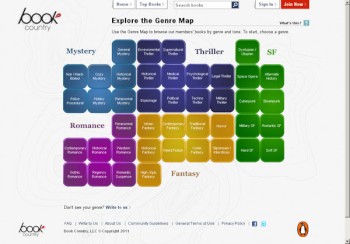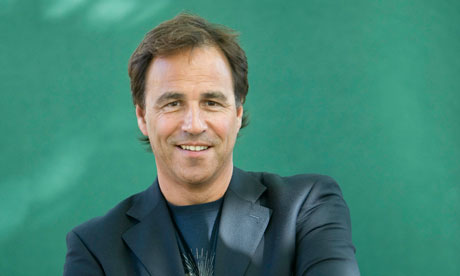Every so often, a book comes along that challenges our beliefs and shakes our world view. So what does it take for literature to make history, asks Boyd Tonkin
Half a century ago, in June 1961, a Brooklyn-born writer and former airforce bombardier – at 38, not quite so young any more – published his debut novel. The opening chapter had surfaced in an anthology in 1955.
But a copywriting job at a New York ad agency in those thrusting early-Mad Men days and family life (with two young children at home) severely delayed the book. Joseph Heller missed his first deadline by around five years.
Within another year or two, millions of readers had reason to be grateful that he had not simply stuck to the slogans and jingles that paid the bills. For Catch-22 not only transformed the surreal risk, boredom and bewilderment of Heller's experience flying B-25 combat missions in Italy during the later stages of the Second World War into an imperishable satire on the military mindset. Nor did it merely (merely!) give the literate world a term for a syndrome or predicament that everyone could recognise but no one had ever before named.
Arguably, this novel became one of the few books that really change the world. In the West, victory in total war – technological and bureaucratic as never before – had fast led into the regimented affluence of a new consumer society, directed by what even a Republican President, Dwight D Eisenhower, could dub "the military-industrial complex". After a heroic battle to secure freedom, millions felt locked in their little boxes by unaccountable powers.
At work, at school, at home, all-encompassing systems organised lives on the basis of a logic and reason that – on closer inspection – came to look utterly phoney. "Orr would be crazy to fly more missions and sane if he didn't," writes Heller, "but if he were sane he had to fly them. If he flew them he was crazy and didn't have to; but if he didn't want to he was sane and had to. Yossarian was moved very deeply by the absolute simplicity of this clause of Catch-22 and let out a respectful whistle." Search for the roots of the 1960s counter-culture, with its mischievous and irreverent withdrawal of respect from the rules and the rule-givers, and the few thousands who sampled psychedelic drugs will not take you very far. Focus instead on the legions who soon began to spot – and still spot – a Catch-22 whenever they feel trapped by the ironclad craziness of modern authority.
That novel rebooted minds, and even lives. Yet whenever we think of the books that changed the world, an ingrained bias tilts towards the ideological "grand narratives" and abstract great ideas. The Holy Scriptures, the doctrinal treatises, the revolutionary manifestos: all did help to shape our world, of course. This spring, the 400th anniversary of the King James Bible – as epoch-making a volume as ever passed through a printing press – has rightly triggered a commemorative avalanche. In his new book, The Book of Books, Melvyn Bragg proposes that that the KJB translations not only moulded the speech and thought of Anglophone culture. From Newtonian experiment to suffragette feminism and the civil-rights movement of Martin Luther King, they also fixed its future routes in politics and science, shining like "the sun to a solar system of human life".
Yet the question of how, and how far, key books and the ideas within them can push social and political change has teased historians ever since the Enlightenment. In the glory days of spreading literacy, when zealots could storm a barricade or heckle a bishop with a cheap edition of an incendiary tract nestling in the pocket of their breeches, the lines looked clearer. My favourite dramatisation of the belief that the word will re-make the world comes, appropriately enough, in Victor Hugo's 1831 novel The Hunchback of Notre Dame. It was published a year after the July Revolution in Paris, led by many journalists, artists and poets. Archdeacon Frollo looks up from a new-fangled printed volume (the action takes place in 1482) to the towers of the cathedral. "Ceci tuera cela," he reflects: "This will kill that".
It didn't, of course. Instead, the Church – like embattled institutions ever since – enlisted the power of the press to fight back against heretical and subversive ideas. Martin Luther never nailed his "95 theses" against ecclesiastical abuses to the church door in Wittenberg in 1517 – a historical fairy-tale to stand alongside King Alfred burning the cakes. He offered them politely to the Archbishop of Mainz. However, by January 1518 they had been printed – and spread like bushfire across Europe. Very soon, the partisans of Rome struck back in kind. Polemic moved fast in the early Reformation, as merchants and envoys carried books and pamphlets along the busy trade routes by land and sea that knit Europe's cities together.
In 1520, Luther had launched a salvo of calls for church reform: three tracts in one year. In 1521, Henry VIII – or so it said on the title page – responded with the orthodox Defence of the Seven Sacraments (ghosted by Thomas More). In gratitude, Pope Leo X granted the English monarch the title of Fidei Defensor, defender of the faith. Look at the face of any coin in your pocket (still marked "F.D") for a glimpse of how much doctrinal tracts mattered to the state.
From the age of Reformation in the 16th century through the age of Revolution in the 18th and 19th, the power of the printed word as a solvent of dogma and superstition became an article of radical – and reactionary – faith. Because it was so fervently believed, it might have grown more real. And no body believed it more firmly than the Holy Office in Rome, which drew up and enforced the Catholic Church's "Index Librorum Prohibitorum" between 1559 and 1966.
From Kepler and Galileo through Voltaire and Hume to Sartre and Simone de Beauvoir, the banned works on the Index more or less add up to a telephone directory for 400 years of Enlightenment. The Index confirmed a belief in the secular Western book as ground-breaking dynamite. In every age, the censor's proscription salutes the power of the censored. Authority does not ban what it does not fear. Famously, though, the Index omitted Charles Darwin's truly world-shattering Origin of Species. That oversight (or wise choice?) has exempted the church of Rome from having to participate in the evolution wars over the past 150 years.
Ironically, one of the most celebrated of all mind-altering authors would complicate the tale of the book as a decisive agent of change. From the Manifesto of the Communist Party, co-written with Friedrich Engels in 1848 to the three volumes of Capital, Karl Marx became an archetype of the writer whose books could divert the course of events. Yet most of his work tells another story. Although admirers of his idealistic "1844 manuscripts" would dispute it, the overall effect of Marxist materialism was to downgrade the firepower of values and beliefs as fuel for the onward march of history. For radical thinkers now, the notion that the economic "base" determines the cultural "superstructure" counts as "vulgar Marxism". But the vulgar version took hold, for better or worse. Class conflict would trump the battle of ideas.
It made for a piquant, and paradoxical, situation. For the wider radical movement, books remained totems and talismans. They worked conversions and propelled the struggle. No one can survey the career of Leo Tolstoy, say, and not acknowledge that the novelist's global renown lent his works a missionary force that touched hearts – and altered history. And not just in Russia: you might argue that, via the impact of his tracts about non-violent revolution on MK Gandhi and other Indian anti-imperialists, the Count helped to bring down the Raj.
Yet the Marxists, and other sociological determinists, cast doubt on the book as a tool of transformation. If vast and deep forces drove world-shaking events, did it matter what writers said? That puzzle haunted nationalist as well as socialist upheavals. "Did that play of mine send out/ Certain men the English shot?" WB Yeats asked in his poem The Man and the Echo, referring to the Easter Rising in Dublin in 1916. He left the question prudently unanswered. Vladimir Lenin, a strategist first and a philosopher second, cut through this knot by fashioning the vanguard party as the machine that could jump-start history.
As the Soviet era faded and intellectual Marxism dissolved in the West, so the conviction that books and beliefs could intervene in history with a game-changing momentum returned. Take that perennial tilting-ground for scholars, the civil wars in England, Scotland and Ireland during the 17th century, and their 18th-century legacy. During the heyday of sociological and economic history, fluctuations in rents, revenues and even crop-yields could account for the battle lines. Later, for historians from Quentin Skinner to Jonathan Clark, the political and religious ideas of the time again acquired heft and edge. Sermons, tracts and pamphlets seeded transitions, or nurtured continuities. The pen was once more mightier than the sword.
Now, in much of Western culture, the iron laws of history have never looked rustier. Many of us accept chaos, chance and uncertainty – ideas with their own bookish baggage, from Nietzsche to Hawking – more readily than the theories that frame our lives as linear cause-and-effect. Religious believers, meanwhile, stick to their own grand narratives, and to the scriptures that carry them – a revival unforeseen in the texts of both liberals and Marxists.
For secular seekers, can books still genuinely change the world? Given the frenzied chatter that surrounds digital media and their power to recruit and marshall militants, from California to Cairo, we might assume that the printed volume itself is bust. But consider the intellectual origins of radical Twitter feeds and Facebook exhortations. Pretty often, for disciples of Naomi Klein, Noam Chomsky or Arundhati Roy, they will lie within more traditional genres.
For sure, a rising scepticism about political dogma has fused with the technology-driven fragmentation of culture to make the Bumper Book of Revolution – or Revelation – a much rarer event. Yet I would argue that authors can still inscribe a tale of change. They must share the quality that enthuse readers of the great scriptures: the ability to tell unforgettable, adhesive stories. Glance at the most cherished works of the late 20th century and early 21st century, and one striking phenomenon emerges. As the credibility of overarching theories ebbs, so the works that incite shifts of outlook in a broad public often take a fictional, not factual form.
Of course, there are exceptions: from the radical existentialism of Jean-Paul Sartre at the start of this period to the radical secularism of Richard Dawkins at its end, both of them couched in expositions and polemics. And novels have moved mountains before: none more spectacularly than Harriet Beecher Stowe's Uncle Tom's Cabin, which after 1852 became a battering-ram for the anti-slavery cause in America's Civil War. The remark attributed to Abraham Lincoln on meeting Stowe in 1862 – "So this is the little lady who started this great war" – is most likely apocryphal. Yet it captures what contemporaries thought. Lord Palmerston, that hard-headed champion of British interests, did say that "I have not read a novel for thirty years; but I have read that book three times, not only for the story, but for the statesmanship of it."
Over the postwar decades, the "statesmanship" of fiction has never looked stronger. George Orwell's Nineteen Eighty-Four broke the totalitarian spell more effectively, and with more universal repercussions, than a hundred anti-Stalinist diatribes. From within the Soviet bloc, Aleksandr Solzhenitsyn cleared a path for dissent at home and repentance abroad in works from One Day in the Life of Ivan Denisovich to the docu-fiction of The Gulag Archipelago. On the same ideological terrain fans of Ayn Rand's hulking libertarian epics, such as The Fountainhead, vastly outnumber students of Hayek or Popper.
Elsewhere on the political spectrum, evidence-based arguments over women's oppression inspired second-wave feminism in the form of such spine-stiffening works as Betty Friedan's The Feminine Mystique. or Germaine Greer's The Female Eunuch. Talk to stalwarts of that movement, though, and one book will come up time and again as the catalyst for conversion: Marilyn French's cross-generational saga from 1977, The Women's Room. When race joined gender as a perceived source of injustice that cried out for redress, fiction again stood in the front line – in Alice Walker's The Color Purple (1982), or Toni Morrison's Beloved (1987).
Even the exceptions I cited – existentialism, and its scientific cousin evolutionary secularism – have avatars in fiction that work just as hard as the volumes of theory and analysis. Albert Camus's The Outsider excited and unnerved readers left unmoved by Sartrean critique. More recently, Philip Pullman and the His Dark Materials trilogy explored the inner space of a post-religious sensibility with an imaginative depth that Dawkinsite controversy cannot reach.
Grand designs in philosophy and politics may have lost their purchase on our imaginations. Stories – expedited by a globalised publishing business - strike home as forcefully as ever. Now another paradox looms into view. Try to concoct a novel as direct propaganda for some cause or ideology, and it will almost invariably fail. Convert vision, memory or nightmare into an art that stands alone, as an Orwell, a Heller or a Morrison did, and who knows how far the seed might spread? So, if you really want your book to change the world, don't set out to write a world-changing book. As Yossarian put it, "That's some catch, that Catch-22."








